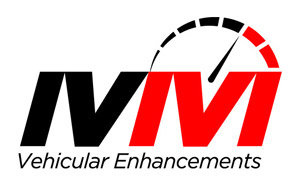How to Install an EFI System
So you want to install a “self-tuning” electronic fuel injection (EFI) system. Fantastic idea, but there are some things to think about for the best odds of success.
The first thing to consider is the rest of the fuel system. Injectors don’t like air bubbles or drops in pressure. If you have a pancake-shaped fuel tank you will have trouble every time you step on the brakes or make a corner.
You need to get a reliable pool for the fuel pump to draw from. A baffled tank, if you can find one, or building one is the easiest way. While we’re discussing fuel pumps, please don’t mount them eight feet away.
Your best option is to mount the fuel pump directly inside the tank like a carburetor. The pump will last longer because it runs cooler and doesn’t have to suck through a straw. Fuel pumps hate that.
If you don’t have access to a properly designed fuel tank, the next best option is a remote reservoir. Most injection manufacturers offer one. It is fairly large, adds complexity and more failure points, but will get the job done.
Your fuel feed line and return matter, too. If you have over 500 horsepower, that factory 5/16 fuel line isn’t going to feed that beast. Another issue is the return line size. A 340lph pump and 3/8 feed line won’t work with a 1/4 return line. Your fuel pressure will be very high at idle and drop as demand goes up. Normally a 3/8 feed and 3/8 return will make everything happy.
The voltage needs to be improved, too. You have a computer with multiple powered sensors and a fuel system to support now. You will need additional amperage which will mean a modern alternator. Your charge wire will need to be updated as well.
The computer’s sensors need to be thoughtfully installed. The coolant sensor should be directly in the coolant flow, the map sensor should not share a vacuum, and the oxygen sensor must be totally sealed.
Now it’s time for the ignition system. You can have the timing controlled through the injection system or let the distributor do the whole thing. Either way is good, but sometimes getting a good RPM signal is tough.
Brands like Edelbrock, FAST, Holley, and MSD are all big names in the aftermarket throttle-body EFI market.
How to Drive with an EFI System
The last topic is how to drive once the system is installed. Keep in mind the computer is relatively slow to learn, you want to let the computer “see” RPM and LOAD points slowly so it can have a longer sample time.
Don’t jump in and hit the track, your computer won’t know what to do and you will be very disappointed. Use slow throttle sweeps and easy acceleration pulls until the computer gets used to what the engine wants.
We’re going to condense this as much as possible because this “class” normally takes multiple days. Pay attention to how you fit in your car. Make sure your mirrors are pointed correctly. You don’t need to see the side of your car. Your car’s center of gravity changes its location based on brake, throttle-body, or steering inputs. Normally it’s somewhere near the middle.
When you step on the brakes, it moves forward. When you turn the steering wheel, it moves left or right. The tires with the most weight on them will do the most work. Wheelie. So that 100 percent is your limit of traction and you can use it for braking, steering, and acceleration. You can combine them, but you can’t go over 100 percent.
If you go over 100% your car will then choose which input to ignore. The brakes are stronger than the steering so your tires lock up and your car stops cornering. This is what happens on a snowy road. The same thing happens with every other dynamic. Here’s the deal, if you are in a corner and you’re at 98% of the car’s ability, you can’t add any input. The trick is to make the corner as soft as possible so we don’t exceed our 100%
There are a couple more things to work on. Your traction threshold moves, more weight, better suspension, better road, and the temperature makes a difference. Your tire’s traction threshold moves constantly. Here’s the graph for your tires: A cold tire doesn’t stick. But what if I told you if the tire gets too hot it sticks the same as a cold wet tire?
A road course is made up of drag strips with corners between them. The fastest drivers are the ones that recognize the slow spots and are able to capitalize on braking and corner manipulation to go faster.
Your car can take a corner at 82 MPH, a race car driver isn’t going to make the car take the corner faster. Instead, they recognize where the fast and slow spots are and keep the car on the perfect “line.” The racing line takes the kinks out of the course. Use the full width of the track. Just because you see the track turning doesn’t mean you have to wiggle the wheel.
What I do is teach the person where the “line” is a help them memorize the track. Here’s the next fun fact: if the memorization goes well, you should be able to close your eyes and “drive” the track. Your imagined and actual lap times will match.
EFI Systems | IVM
Self-learning fuel-injection systems have changed the landscape of the driving world. The current systems are so much faster, changing the base fuel map at idle, part-throttle, and wide-open throttle nearly instantaneously.
At IVM, we can set your car up with an EFI system. Come in to see how we can get your car going faster and running more efficiently.
